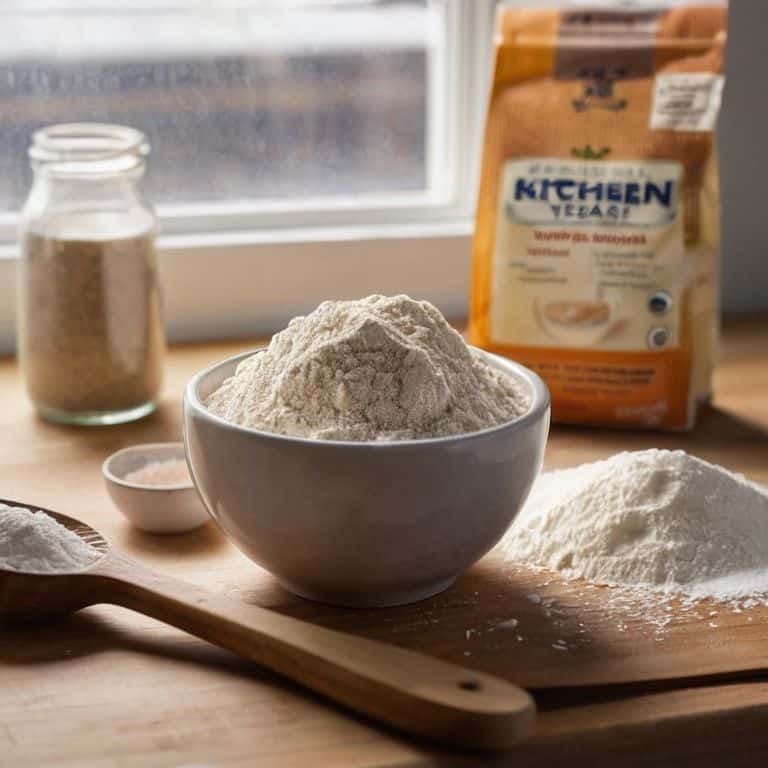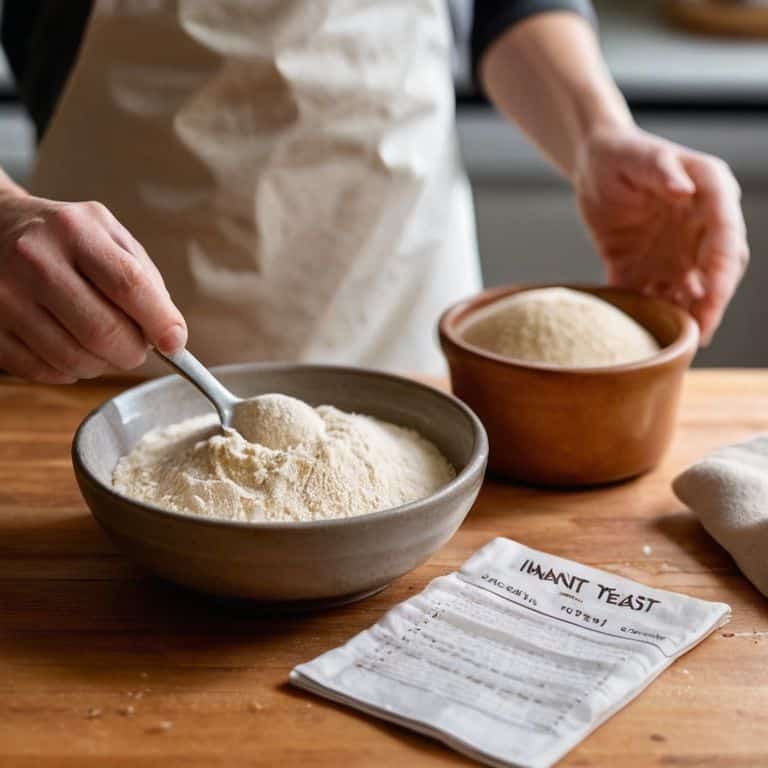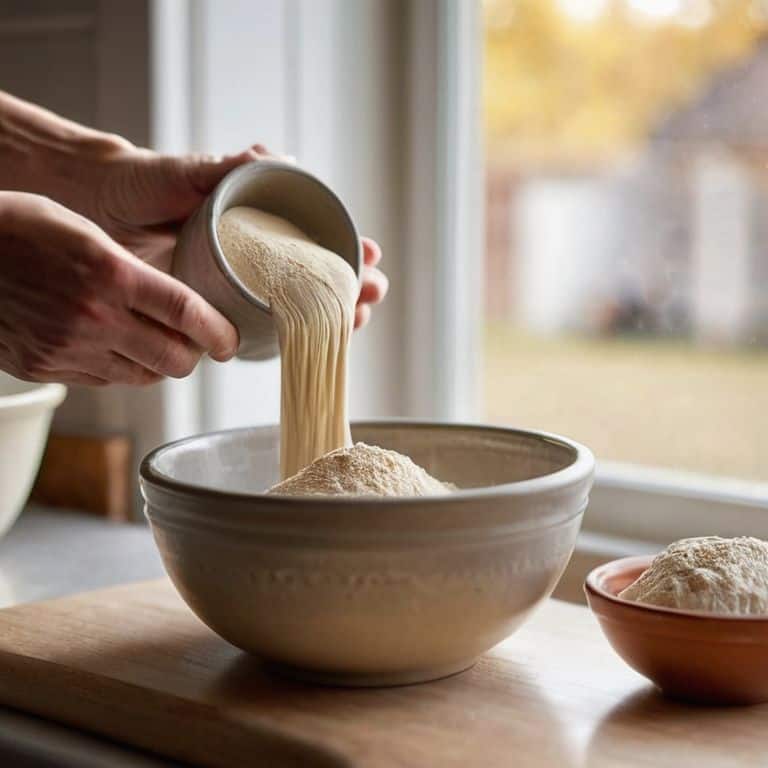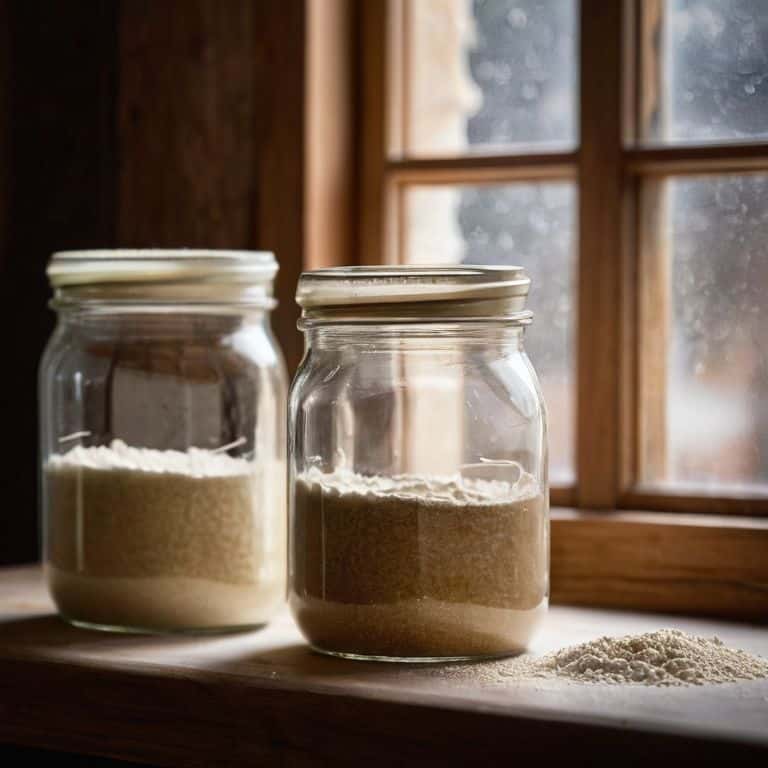I still remember the first time I encountered the difference between active dry and instant yeast in culinary school. Our instructor would often emphasize the importance of using the right type of yeast for the recipe, but I never really understood why until I started experimenting with different types in my own kitchen. The smell of freshly baked bread wafting from the oven, the sound of dough rising – it all came down to the tiny microorganisms that made it possible. As I delved deeper into the world of baking, I realized that many home cooks were intimidated by the idea of working with yeast, and that’s where I wanted to make a difference.
My goal is to provide you with honest, straightforward advice on navigating the world of yeast, specifically when it comes to the difference between active dry and instant yeast. I’ll share my own experiences, successes, and failures, to help you understand how to choose the right type of yeast for your recipes. I believe that baking should be enjoyable, not stressful, and that’s why I’ll cut through the noise and give you the lowdown on what really matters when working with active dry and instant yeast. By the end of this article, you’ll be equipped with the knowledge to make informed decisions and create delicious, homemade treats that will impress your friends and family.
Table of Contents
Rise to the Occasion

As I delve into the world of yeast, I’m reminded of my early baking days when I’d often get confused between active dry yeast and instant yeast. It wasn’t until I started experimenting with different recipes that I realized the significance of choosing the right type of yeast. For instance, when using active dry yeast, it’s essential to follow a yeast activation method to ensure it’s properly dissolved and activated before adding it to your dough.
When it comes to bread proofing techniques, the type of yeast used can greatly impact the outcome. I’ve found that active dry yeast requires a bit more patience and time to proof, whereas instant yeast can produce faster results. To make things easier, I always refer to a yeast conversion chart to ensure I’m using the right amount of yeast for my recipe. This handy tool has saved me from many baking blunders and has become an essential part of my baking arsenal.
In my experience, the key to achieving perfect bread lies in understanding how to store yeast properly. Whether you’re using active dry or instant yeast, it’s crucial to keep it in an airtight container and store it in the fridge or freezer to maintain its potency. By following these simple tips and choosing the right type of yeast for your recipe, you’ll be well on your way to creating delicious, mouthwatering bread that’s sure to impress.
Breadwinner Basics Active Dry Yeast vs Instant
When it comes to bread making, understanding the difference between active dry and instant yeast is crucial. I’ve found that using high-quality yeast can make all the difference in the world, resulting in a lighter, airier texture that’s just perfect for comfort foods like homemade bread or pizza dough.
In my experience, active dry yeast requires a bit more effort, as it needs to be activated in warm water before being added to the recipe, whereas instant yeast can be mixed directly into the dry ingredients. This subtle distinction can affect the overall rise and flavor of your baked goods, so it’s worth paying attention to the yeast conversion process to ensure you’re getting the best results.
Cracking the Code Yeast Conversion Chart
When it comes to substituting one type of yeast for another, things can get a bit tricky. To make life easier, I swear by a reliable yeast conversion chart. This simple tool helps me ensure that my baked goods turn out light and fluffy, every time.
By using a yeast ratio guide, I can confidently switch between active dry and instant yeast in my favorite recipes. Whether I’m making a hearty loaf of bread or a batch of sweet pastries, this handy chart takes the guesswork out of yeast conversion, allowing me to focus on the fun part – baking and sharing delicious treats with the people I love.
The Difference Between Active Dry and Instant Yeast

When it comes to baking, understanding the nuances of yeast is crucial. I’ve found that having a reliable yeast conversion chart on hand can be a total game-changer. It’s amazing how a simple switch from active dry to instant yeast can affect the outcome of a recipe. For instance, when using active dry yeast, it’s essential to activate the yeast before adding it to the mix, whereas instant yeast can be added directly to the dry ingredients.
In my experience, the key to successful bread making lies in the bread proofing techniques. Whether you’re using active dry or instant yeast, allowing the dough to proof properly is vital. I’ve learned that it’s all about finding the right balance and being patient. When it comes to storing yeast, I always make sure to keep it in an airtight container in the fridge to maintain its potency.
One of the most common mistakes I see people make is not understanding the difference between yeast types in baking. Active dry yeast and instant yeast have distinct characteristics that can affect the final product. By grasping these differences and using the right yeast for the job, you’ll be well on your way to creating delicious, homemade bread that’s sure to impress.
Proof Is in the Pudding Bread Proofing Techniques
When it comes to bread proofing, I always say that patience is a virtue. Allowing your dough to rise can be a game-changer, and it’s essential to get it just right. Whether you’re using active dry or instant yeast, the proofing process remains the same.
To ensure your bread turns out light and fluffy, you need to provide the right environment for it to rise to its full potential. This means finding a warm, draft-free spot for your dough to proof, and making sure it’s not over- or under-proofed. With a little practice, you’ll be a pro at bread proofing in no time.
Yeast Storage Secrets How to Keep It Fresh
To keep your yeast fresh and ready for action, it’s essential to store it in a cool, dry place. I like to keep mine in the fridge, where it’s away from direct sunlight and heat sources. This helps to slow down the yeast’s activity, keeping it from degrading over time. By storing it properly, you can ensure that your yeast is always ready to help your dough rise to its full potential.
When it comes to yeast storage, airtight containers are your best friend. They keep moisture and other contaminants out, which can affect the yeast’s performance. I use small glass jars with tight-fitting lids to store my yeast, and I’ve never had any issues with it losing its potency. With proper storage, you can enjoy fresh, active yeast for all your baking needs.
Yeast Wisdom: 5 Essential Tips to Rise Above
- Always check the expiration date of your yeast, whether it’s active dry or instant, to ensure it’s still active and ready to help your dough rise
- Store your yeast in a cool, dry place, like the fridge or freezer, to keep it fresh for a longer period – I like to keep mine in an airtight container in the fridge
- When substituting active dry yeast with instant yeast, remember to use about 25% less instant yeast, as it’s more potent and can easily over-proof your dough
- Before adding yeast to your recipe, make sure to ‘wake it up’ by mixing it with warm water (around 100°F to 110°F) and a pinch of sugar – this step is crucial for activating the yeast
- Keep in mind that instant yeast can be mixed directly into dry ingredients, while active dry yeast needs to be rehydrated first – a simple but important distinction to keep your baking on track
Key Takeaways for the Perfect Rise
To achieve the perfect rise, remember that active dry yeast and instant yeast have different rehydration requirements, with active dry yeast needing to be rehydrated before use, while instant yeast can be mixed directly into dry ingredients
Proper yeast storage is crucial, as exposure to air, moisture, and heat can significantly reduce yeast activity, so store it in an airtight container in the fridge or freezer
When substituting between active dry and instant yeast, use a yeast conversion chart to ensure the right proportions, as a general rule, 1 teaspoon of active dry yeast is equivalent to 0.75 teaspoons of instant yeast
The Yeast Truth
The difference between active dry and instant yeast isn’t just about the label – it’s about understanding the heartbeat of your dough, and how to coax out the best rise, the best flavor, and the best texture from your beloved baked goods.
Sophie Carter
Rise to New Heights

As we’ve explored the world of yeast, from active dry to instant, it’s clear that understanding the difference between these two types is crucial for achieving the perfect rise in our baked goods. We’ve cracked the code with our yeast conversion chart, discussed the basics of breadwinner active dry yeast versus instant, and even dove into the proofing techniques that make all the difference. By mastering these fundamentals and storing our yeast properly, we can ensure that our baked creations turn out light, fluffy, and full of flavor. Whether you’re a seasoned baker or just starting out, remembering that yeast is a living thing and treating it with care will make all the difference in your baking journey.
Now, as you head back into your own kitchen, I hope you feel empowered to tackle any recipe that comes your way, knowing the secret to making your dough rise to new heights. Don’t be afraid to experiment and try new things, because that’s where the magic happens, and the joy of baking really comes alive. With practice and patience, you’ll be whipping up mouthwatering masterpieces in no time, and the sense of accomplishment that comes with sharing a delicious, homemade treat with loved ones is truly one of life’s greatest pleasures. So go ahead, get baking, and remember, the most important ingredient in any recipe is love.
Frequently Asked Questions
Can I substitute active dry yeast with instant yeast in my favorite bread recipe without affecting the outcome?
While you can substitute active dry yeast with instant yeast, keep in mind that instant yeast is more potent, so you’ll need about 25% less of it. For example, if a recipe calls for 1 teaspoon of active dry yeast, use about 3/4 teaspoon of instant yeast instead. This should give you a similar rise without over-Proofing your dough.
How do I know if my active dry yeast is still active and not expired?
To check if your active dry yeast is still alive, try the ‘foam test’: mix 1 teaspoon of sugar, 1 teaspoon of yeast, and 1/2 cup of warm water (around 100°F). If it’s active, you’ll see a foamy layer on top within 5-10 minutes. If not, it’s time to grab some fresh yeast!
What are some common mistakes to avoid when using instant yeast in sweet bread recipes?
When using instant yeast in sweet bread recipes, I’ve found that overmixing and using too-hot liquids are common mistakes to avoid. Also, be sure to reduce the yeast amount, as sweet doughs can ferment quickly. Trust me, I’ve been there – a little patience and finesse will save you from a dense or over-proofed loaf!
